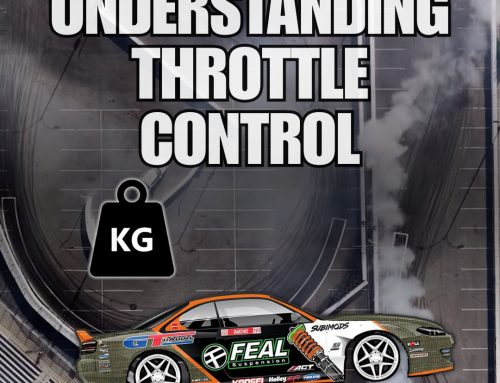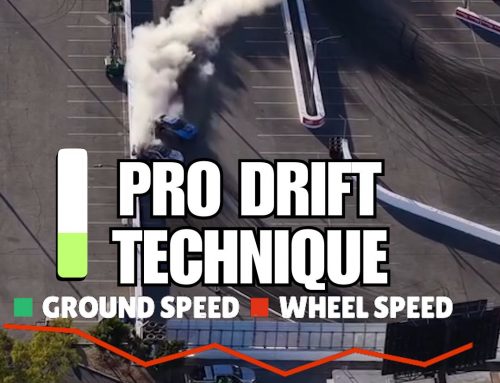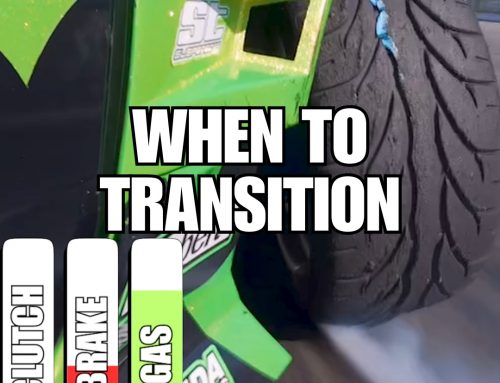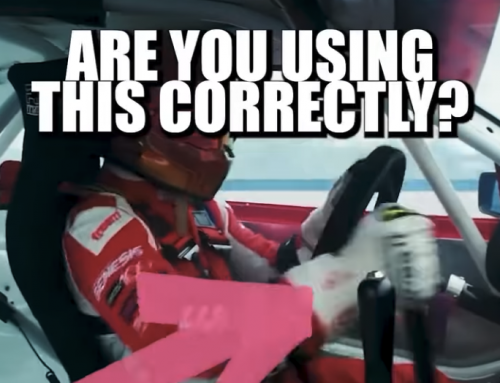At the highest level of drifting, Formula Drift, you compete against 800-1400 horsepower drift cars. The amount of wheel speed you can generate is incredible, resulting in ridiculous amounts of tire smoke. It’s not uncommon to witness a chase driver being completely blinded by a wall of smoke and having to stop immediately.

photo by ignition_source_tv / Faruk Kugay in his Nissan s14, leading a formula drift battle against Connor O’Sully in his BMW e46 race car.
With over 20 years of drifting experience, Formula Drift driver Faruk Kugay has developed an effective solution for dealing with smoke-induced blindness.
“When you’ve lost visual contact, you might encounter a wall of smoke that’s impossible to see through,” he explains. This is a common issue in drifting. Initially, when faced with this situation, the instinct is to stop the car as quickly as possible due to not being able to see. Faruk’s approach involves relying on his sense of hearing. He elaborates, “The way I handle such situations is by listening. I focus solely on the position of the lead car’s exhaust note in relation to my car.” Instead of relying on sight, Faruk has learned to interpret the lead car’s exhaust note to determine the perfect transition timing. He adds, “So, if their exhaust note starts to transition over my hood, I transition as well. Sometimes, if it’s a fast transition due to an aggressive driver or a tricky part of the track, as soon as I hear their exhaust note move even slightly in relation to my car, I transition blindly and attempt to jump through the smoke.”
One frequently asked question is: What do you focus on while drifting in the chase position?
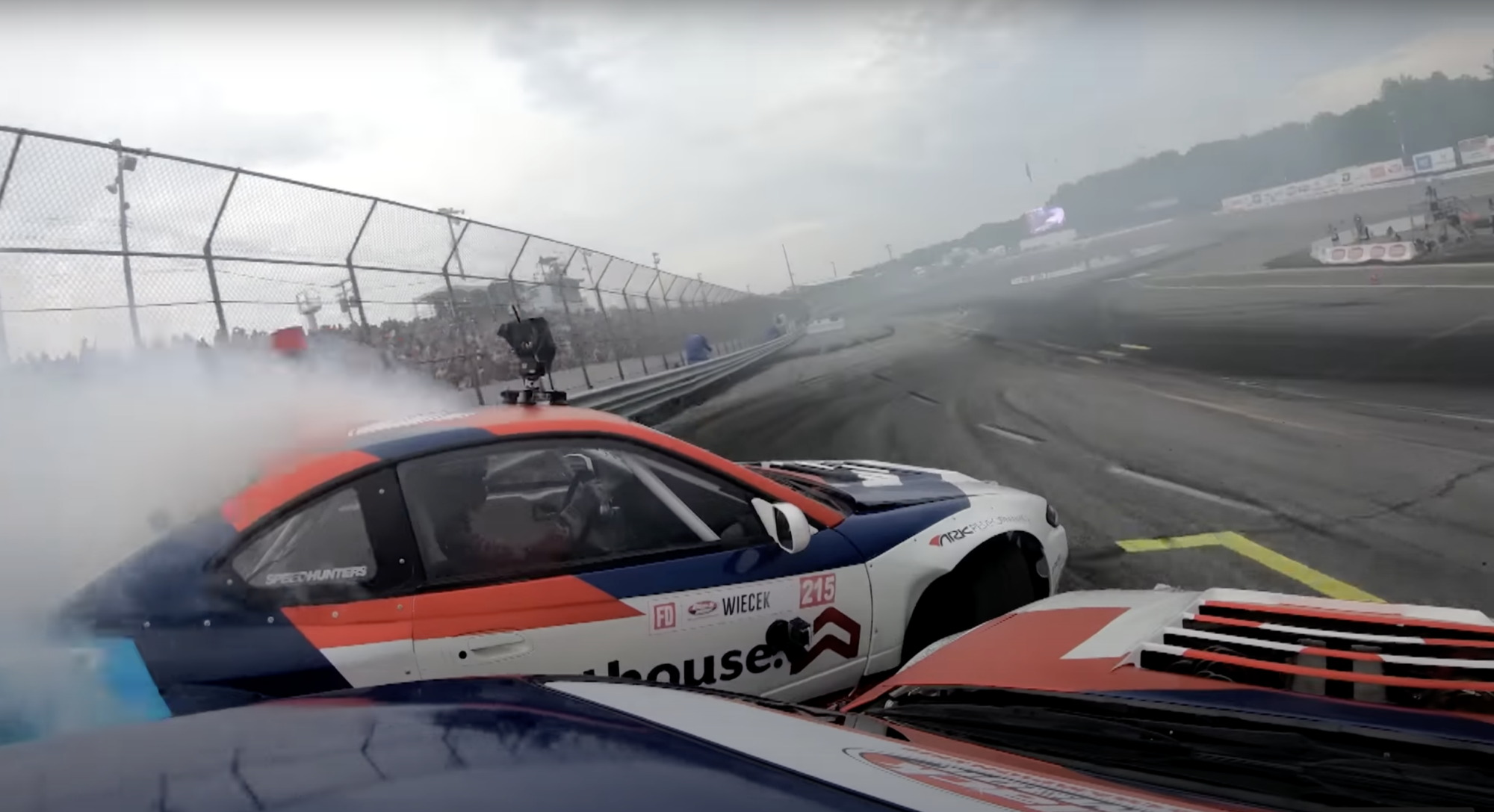
James Dean and Piotr Wiecek, 2 of the best drifters in the world, battling it out at Formula Drift in their almost matching Nissan s14s. As you can see, James Dean (Chase car) is aligning his front wheel with Piotr’s (Lead car) A pillar. This creates that perfect sightline over the hood, allowing you to see their front wheel swell.
Given the many different factors at play, you must be mindful of all your inputs and ensure your car is performing well and responding as you intend. On top of that, you have the lead car, with its exhaust noise right by your ear. Usually banging off of the rev limiter, tire smoke launched in your face, and fiery exhaust flames directed at your racecar creates a chaotic environment. Through this, it can be challenging to decide where to direct your attention, especially if you’re new to the sport.
Faruk offers valuable advice: “Watch the front wheels of the lead car.” The front wheels provide a clear indication of the lead driver’s actions, leaving no room for guesswork. Faruk emphasizes that he focuses on the lead car’s front wheels to detect any signs of corrections or transitions. He points out the advantage of your sightline, when positioned correctly, framing the front wheels and the hood of the lead car. When tandem drifting, staying in the “pocket” is crucial. To attain this position, your front wheels must align with the lead car’s door, specifically with your front wheel matching up to their A-pillar. Looking at the back of their car is a mistake. Just like when you are driving on the public roads, look where you want to go. Your hands will follow.
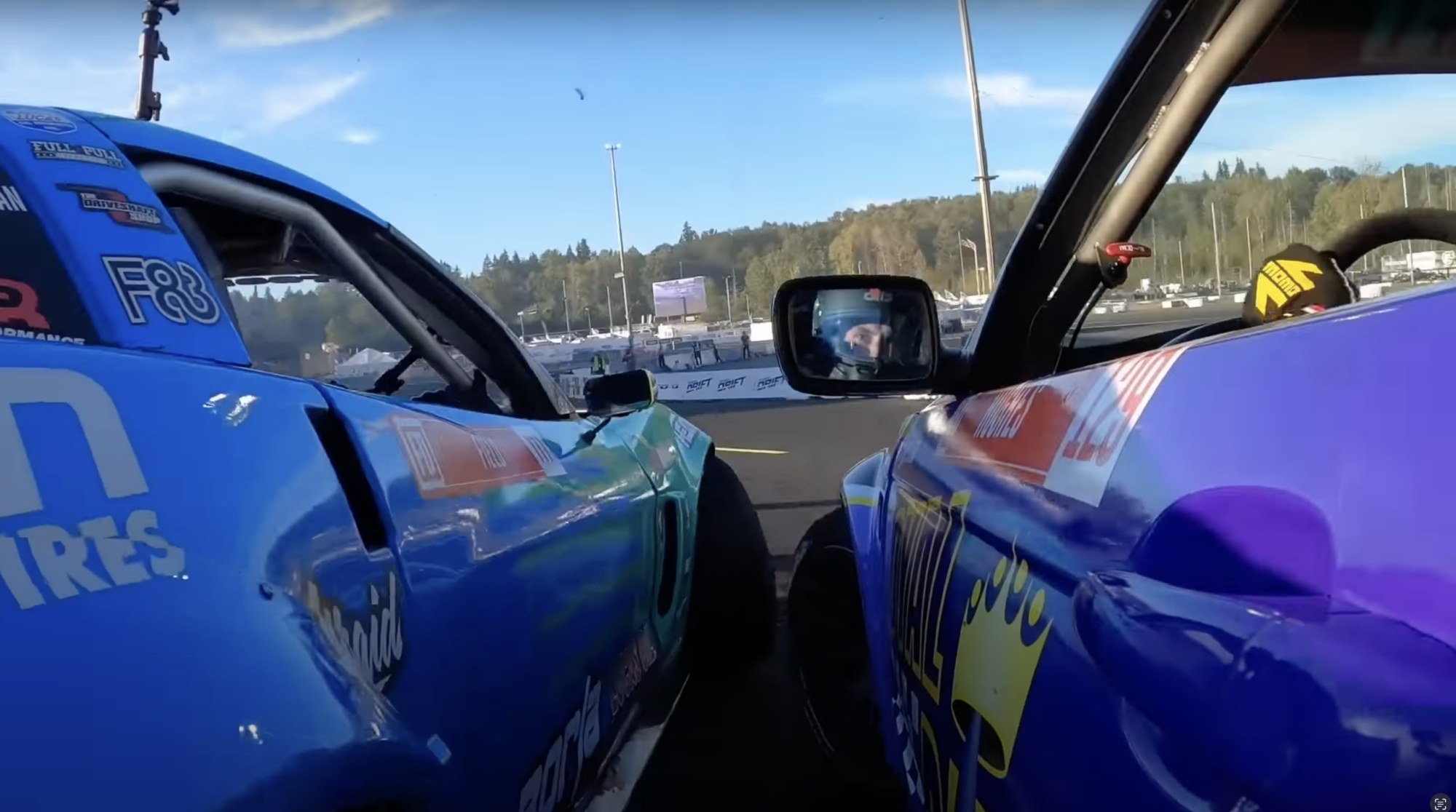
Dylan Hughes finding the pocket on Matt Field’s c6 corvette formula drift race car. Dylan is demonstrating “finding the pocket” to the extreme. Some drivers would consider this as “running doors.”
This brings us to a surprising fact: being closer in tandem is safer than maintaining distance. When you’re closer to the lead driver, your true velocity closely mirrors theirs, unlike when you’re 2-3 cars behind. This proximity allows for more accurate assessment of their movements, even if they spin out – you can respond accordingly. A significant cause of accidents occurs when the chase car tries to catch up with the lead car. While the lead car’s velocity might be around 35 MPH, the chase car, positioned 3-4 cars behind, might be going 45-50 MPH, attempting to enter the pocket. If the lead car decelerates, spins, or stops abruptly, the chase car lacks the time to react, resulting in a high-impact collision due to its greater inertia. Starting close is almost always required for finishing close. Therefore, as you start your run, it’s recommended to be in close proximity to the lead driver to avoid getting “gapped” and having multiple car lengths placed between you.
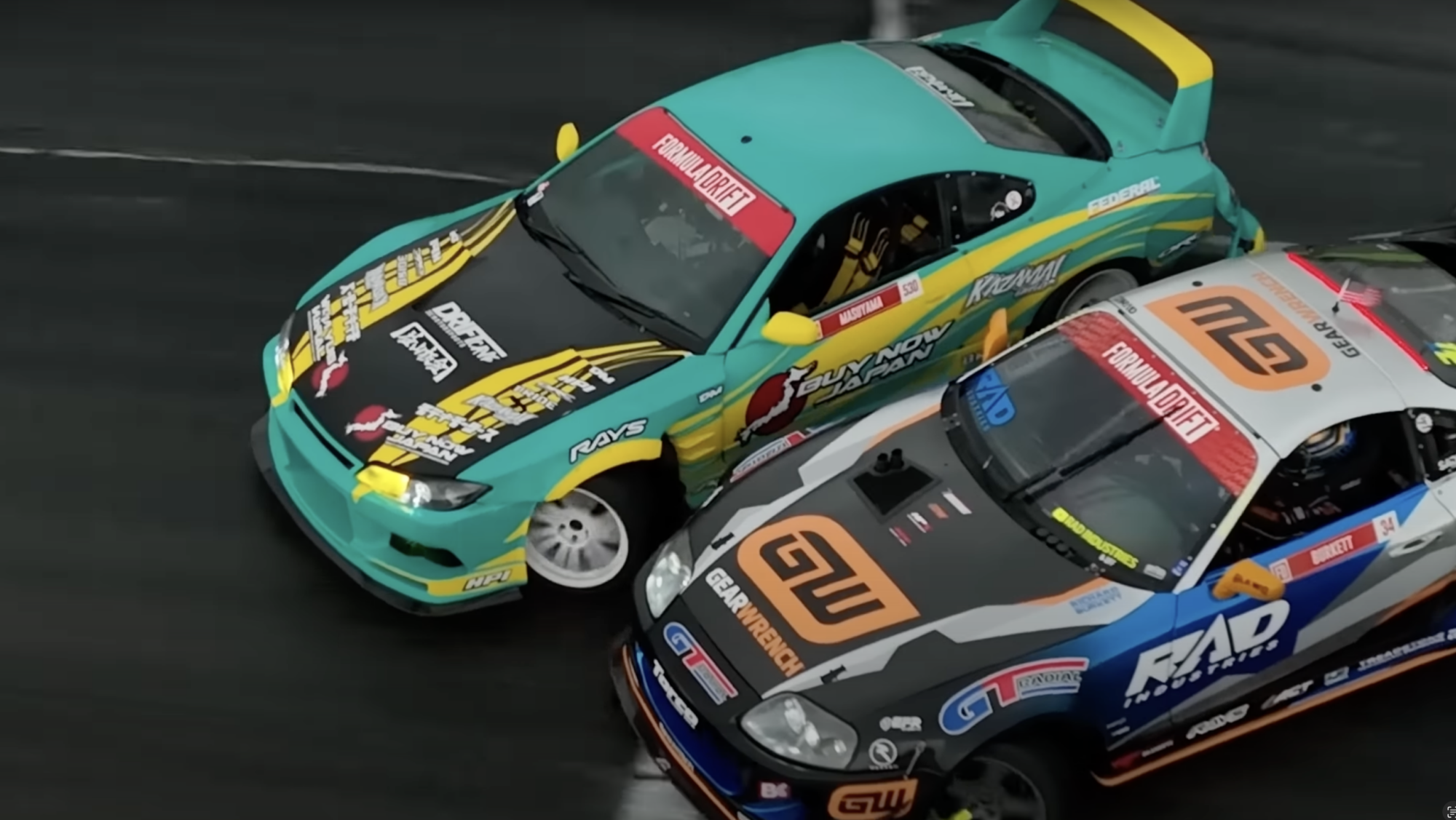
Dan “Rad Dan” Burkett chasing down Wataru Masuyama. the Toyota Supra (Rad Dan) is in the proper position, his front right wheel is just ahead of the “a pillar” on Wataru’s Nissan s14.
Now, onto the topic of preparing mentally and physically before a race. Are there any specific rituals you follow?
“As I age, I’ve come to realize that stretching is paramount. For me, stretching is absolutely essential. Cramping up inside a car is all too easy. Additionally, staying hydrated is crucial. Consuming a bottle of water per hour is a good guideline, but during a race weekend, you should aim for 8 to 10 bottles a day.” Beyond stretching, taking care of your physical well-being is vital, which includes staying well-hydrated.
While physical preparation is important, drifting is equally a mental sport. I take a lot of time to center myself before a competition, ensuring I’m fully focused on the task ahead. The sport demands intense concentration. “It’s crazy how much focus is required because it’s a lot of effort, money, and time as well as the contribution of your team members, and in a matter of sometimes just 26 seconds, a mistake could make it all pointless.” There is so much effort that goes into competing professionally, so many required steps to make this worthwhile. From the years of practice, to building the racecar, working with sponsors, learning how to generate the revenue to spend on professional racing, the logistics of getting our to all of the pro events, and all of the sacrifices along the way. All for 20-45 seconds that make or break you. “I have found that a lot of the drivers have the same thoughts. It’s more all mental. The physical part is kind of the easy part, but getting yourself ready mentally is crucial.”
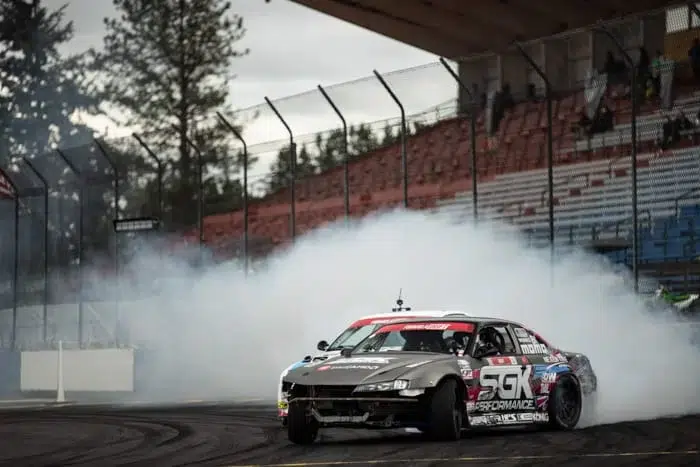
Faruk Kugay drifting his Nissan s14, creating a wall of tire smoke making it more difficult to follow.

